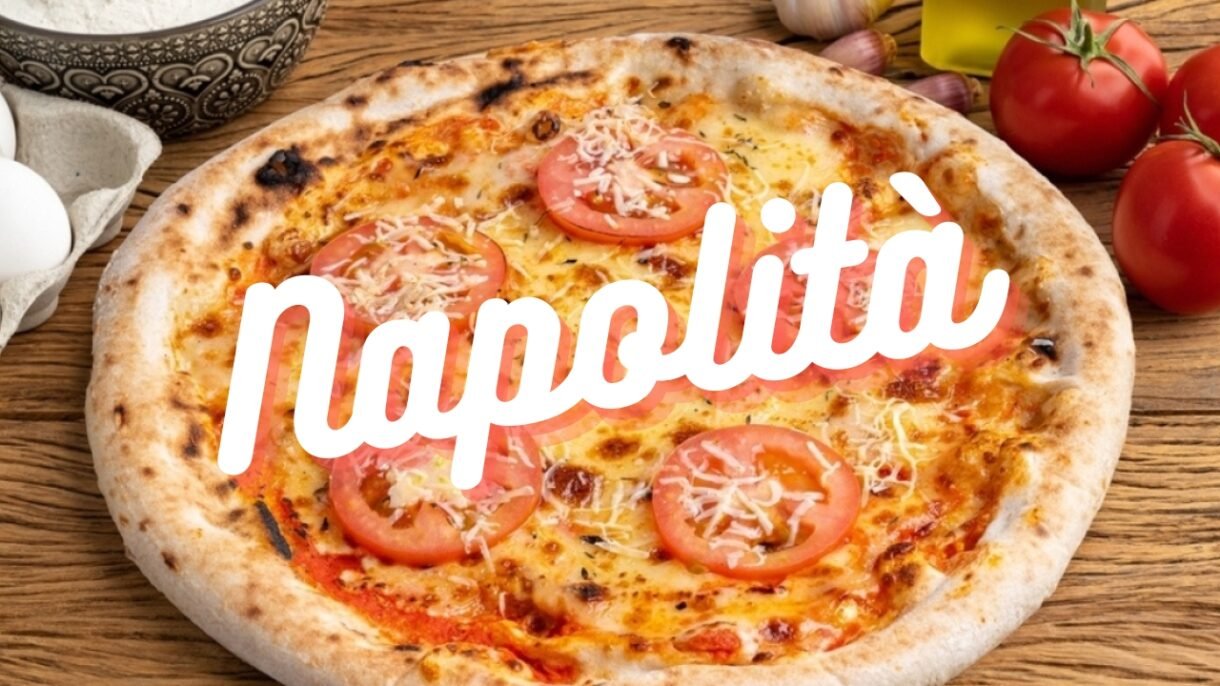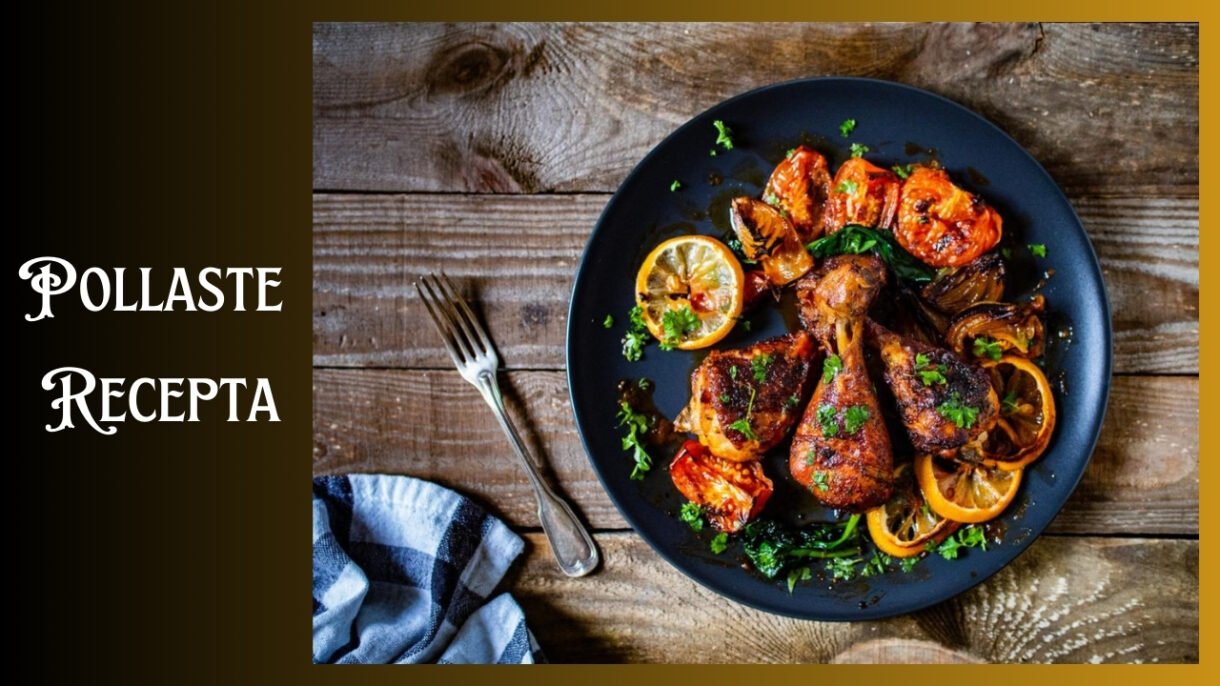Food
Exploring Napolità: A Journey Through Taste

Tucked in the cradle of the Italian coast, Naples beckons with more than just its turquoise bay and the looming silhouette of Mount Vesuvius. This is a city that resonates with the smell of freshly baked pizza, the rhythmic thump of preparing espresso, and the warm glow of a culinary tradition that has uplifted many a soul. Welcome to Napolità, the delectable heart of Neapolitan cuisine.
In this extensive exploration, we don the indigo apron of the Neapolitan chef to unearth the secrets of Italy’s vibrant food capital. Delve into the wondrous evolution of Neapolitan cuisine, savor the iconic tastes that define it, and discover the cultural tapestry that weaves through every bite. By the end of this savory saga, your palate will be primed for a culinary adventure of a lifetime, or at least an urgent trip to the nearest authentic Neapolitan eatery.
A Rich Tapestry of Flavors: The Heritage of Neapolitan Cuisine
Before we can savor a meal, we must first grasp the ingredients that have been marinating in history and culture. Like the layers of a lasagna, Neapolitan cuisine is a tapestry woven from the threads of various culinary legacies that have crisscrossed the city for centuries.
Italians in Naples don’t just eat to live – they live to eat. The city’s love affair with food is multi-layered and deep, influenced by historical events such as Spanish rule, the Bourbon dynasty, and the import of New World ingredients, each leaving an indelible imprint on Naples’ culinary landscape.
The Origins: A Historical Palate
The foundations of Neapolitan cuisine are as old as the city itself, with Greek and Roman influences seeping into local recipes. Famed for their sweet-tooth, the Neapolitans’ penchant for dolce led to an array of delectable pastries and desserts, early signs of the richness to come. The arrival of tomatoes, essential to Neapolitan cuisine, popularized classics like pizza, before they would go on to revolutionize global culinary traditions.
The Royal Influence
The city’s Royal history intermingled with its gastronomy after the unification of Italy. Naples’ royal chefs played a role much like their French counterparts, by constructing complex dishes of the Court, yet maintaining the simplicity that is the hallmark of Neapolitan cuisine. This mingling of decadence and simplicity is a defining feature that echoes through to the city’s food today.
The Spanish Steps: Spice and Fire
Spices brought back from the New World gave Naples’ dishes a rich twist, adding complexity to the flavor profile that was typically different from the rest of Italy. The spice trade, alone with an influx of seafood, led to the creation of bold, briny dishes known for their fiery vigor, deftly captured in Neapolitan staples such as ‘Spaghetti alle Vongole’.
Decoding the Classics: Iconic Neapolitan Dishes
No culinary safari through Naples would be complete without a thorough exploration of the culinary treasures that have made the city a destination for gastronomes. Ready your fork as we lift the lid on the robust, soulful creations that have come to epitomize Neapolitan cooking.
Margherita Pizza: A Slice of History
The most iconic export of Neapolitan cuisine, the Margherita pizza, is a history lesson topped with tomatoes, mozzarella, and basil. Its creation, a homage to Italy’s unification and the colors of the Italian flag, is celebrated annually on September 5th. This simple yet powerful dish heralded a revolution in gastronomy and remains a flag bearer for Neapolitan tastes worldwide.
Street Food Al Fresco
Naples holds a special place in the world of street food, where simplicity meets intense flavors. From classic ‘Frittatina’ to ‘Scialatielli ‘e vongole’, the streets of Naples offer a tantalizing array of street-side dishes that are full of character, perfect for a quick bite or an indulgent sampling spree.
Sfogliatella Santa Rosa
This flaky, shell-shaped pastry filled with ricotta and candied peel is as much a work of art as a delightful dessert. Named after Santa Rosa, the patron saint of Vico Equense, the Sfogliatella Santa Rosa is a testament to the divine inspiration that is no stranger in Neapolitan kitchens.
Spaghetti alle Vongole
A testament to Naples’ affinity for the sea, Spaghetti alle Vongole is an exquisite dish that encapsulates the city’s coastal bounty. With just a handful of ingredients – clams, garlic, olive oil, and parsley – the Neapolitans cast a spell that lingers long after the last twirl of pasta.
Local Ingredients: The Freshest of the Fresh
Central to the magnificence of Neapolitan cuisine is the principle of using fresh, local produce that spans land and sea. Neapolitan dishes are not just about the recipe; they’re about the quality of the raw materials – a commitment to honor the ingredients that nature bestows upon them.
From the Earth: The Market Experience
Visit one of Naples’ bustling markets, and you’ll witness a symphony of colors, smells, and clattering deals. The locals come here not just to buy food, but to celebrate it. Freshly picked fruit and vegetables, artisanal cheeses, and a cornucopia of cured meats paint a picture of the regional bounty that makes its way into quintessential Neapolitan dishes.
The Sea’s Offering
When it comes to seafood, Naples is an enviable position. The Tyrrhenian Sea is a cornucopia of treasures, providing the city with a daily bounty of fish and seafood. Anchovies, sardines, red mullets, and of course, clams, are the stars of many a Neapolitan table, encapsulating the city’s primal connection to the sea.
The Makers of Mozzarella
Spend an afternoon with the Buffalo mozzarella makers in the countryside around Naples, and you’ll understand the craftsmanship behind this iconic ingredient. The agri-tourism experience not only offers a taste of fresh mozzarella but a rare insight into the artistry that produces one of the world’s most beloved cheeses.
Where to Savor the Savory: A Guide to Neapolitan Eateries
Navigating Naples’ extensive gastronomic scene can be as complex as one of its grand feasts. Here is a guide to sate your appetite, from the legendary pizzerias to hidden trattorias that offer an elemental yet unforgettable food experience.
The Pizzerias of Power
Naples is, without a doubt, the pizza capital of the world. From the fabled pizzerias where pizza Margheritas were first baked over a century ago – like Da Michele and Brandi – to the modern marvels helmed by celebrity chefs, the city offers a slice for every palate. These sanctuaries of the sacred pizza boast wood-fired ovens, fresh ingredients, and pizzaiolos whose skills have been honed over generations.
Hidden Delights
Venture off the beaten path, and you’ll come across trattorias and ‘osterie’ with recipes jealously guarded by family traditions. These are the places where nonna’s recipes live on, and the dishes are as much a part of history as the walls that contain them. The warmth of these establishments is as nourishing as the food they serve.
Fine Dining, Neapolitan Style
For a more contemporary spin on Neapolitan cuisine, the city’s burgeoning fine dining scene brings a fusion of tradition and innovation to the table. Chefs in Naples are turning the classics on their head, reimagining timeless recipes with modern techniques and global influences, yet never straying too far from the soulful simplicity that defines Neapolitan cooking.
The Social Scenery of Savoring: A Culinary Culture
Eating in Naples is more than a physical experience; it’s a social institution. The rich tapestry of Neapolitan culinary culture intertwines the act of eating with family, community, and the celebration of life itself.
The Importance of Family Meals
Family meals are sacrosanct in Naples, a time to come together, share stories, and pass recipes through generations. The dining table becomes a center of gravity, drawing in neighbors, friends, and well-wishers to partake in the familial feast.
Coffee Culture: The Daily Rite
Neapolitans do not merely drink coffee; they perform a ritual. The city is a haven for coffee aficionados, where espresso is served with pomp and circumstance. From the traditional ‘caffè sospeso’ to a bracing ‘caffe corretto’, Naples’ coffee houses are a testament to the importance of this dark elixir in daily life.
Festa & Food
Naples’ streets come alive during its many ‘festas’, and food plays a central role in these celebrations. Whether it’s the ‘Sagra dei Limoni’ celebrating the region’s lemons or the ‘Festa dei Sfogliatella’, the city and its citizens find any excuse to honor their gastronomic heritage with a ‘festa’ and a feast.
The Global Spread of Neapolitan Food
Neapolitan cuisine has transcended geographical boundaries, finding a home in the hearts – and stomachs – of food lovers worldwide. From the pizzerias of New York to the Caffè in Paris, the spirit of Neapolitan cooking has influenced global culinary trends and can be enjoyed on nearly every continent.
The Diaspora of Dough
Neapolitan pizza has inspired a global movement, with pizzaiolos in cities across the world adhering to the strict standards set by the “Associazione Verace Pizza Napoletana” (AVPN). The association ensures that the traditional techniques and ingredients of Neapolitan pizza-making are faithfully reproduced, no matter how far from the city itself.
Lessons in Simplicity
The enduring legacy of Neapolitan cuisine lies in its celebration of simplicity and ingredient-driven philosophy. Dishes like spaghetti alle vongole have proven that, when it comes to creating delicious food, less is often more. This fundamental tenet has had a profound impact on the culinary world, as chefs globally seek to return to the basics.
You May Also Like: Exploring the Flavorful World of Cassasse: A Culinary Journey
Conclusion:
To conclude this epicurean tale is to invite others to take part in the experience. Naples and its cuisine offer a doorway into a realm of passion, history, and culture that every food lover should savor. Whether you’re standing in a pizzeria overlooking the sea or sitting at a family table in the heart of the city, Napolità is an experience that will invigorate your senses and nourish your soul.
For those eager to partake in this culinary pilgrimage, Naples awaits with open arms and a feast laid out on its streets. Take this knowledge with you, but leave ample space for the true magic that is Napolità – the live orchestra of Naples, playing its symphony of flavors just for you. Buon Appetito!
In the quest for authenticity, it’s about more than just the dishes; it’s about the people and the stories that give them life. In Naples, food is love, tradition, and an irrevocable part of a city’s identity. The legacy of Napolità transcends from the pleasure one gleans from the rich, complex flavors, to a feeling akin to being wrapped in a warm, comforting blanket – a taste of Naple’s quintessence. Whether you’re planning a visit to Italy’s boot or looking for ways to bring a little slice of Naples to your kitchen, an understanding of Napolità will forever enhance your culinary ventures. It’s time to celebrate the flavors of Naples and join the ranks of those who have succumbed to the enchanting allure of Napolità – a taste that lingers, much like an indelible memory of a city steeped in history, and of course, great food.
FAQs
What is the secret to authentic Neapolitan pizza?
The secret to authentic Neapolitan pizza lies in its simplicity and the quality of its ingredients. True Neapolitan pizza consists of a thin, soft crust made from high-quality wheat flour, water, salt, and yeast. It is topped with San Marzano tomatoes, mozzarella di bufala, fresh basil, and extra-virgin olive oil, then baked in a wood-fired oven at a high temperature for just 60 to 90 seconds.
How does Neapolitan coffee differ from regular coffee?
Neapolitan coffee stands out for its strong, rich flavor and dense crema, a testament to the traditional brewing method using a flip coffee pot or “caffettiera napoletana.” This method involves brewing coffee by gravity as water filters down through the coffee grounds, resulting in a highly concentrated espresso.
What makes Neapolitan cuisine globally influential?
The global influence of Neapolitan cuisine is primarily due to its focus on simplicity, using fresh, high-quality ingredients, and maintaining traditional cooking methods. Dishes like Neapolitan pizza have set standards worldwide for authenticity and quality, inspiring chefs and home cooks alike to prioritize ingredient-focused cooking.
Can Neapolitan dishes be easily recreated at home?
Yes, many Neapolitan dishes can be recreated at home with the right ingredients and techniques. The simplicity of the cuisine means that even novice cooks can prepare dishes like spaghetti alle vongole or a basic Margherita pizza, provided they source high-quality ingredients and follow traditional recipes.
What is “Associazione Verace Pizza Napoletana” (AVPN)?
The “Associazione Verace Pizza Napoletana” (AVPN) is an organization established to protect and promote the authenticity and tradition of Neapolitan pizza worldwide. It sets strict guidelines for ingredients, preparation methods, and baking conditions that pizzerias must follow to be certified as serving true Neapolitan pizza.
Food
Delicious Pollaste Recepta: A Traditional Chicken Recipe

In the vast world of culinary delights, few dishes capture the essence of tradition and comfort as beautifully as the Pollaste Recepta. This traditional chicken recipe has been passed down through generations, embodying the rich flavors and cultural heritage of its origins. Whether you’re a seasoned home cook or a culinary adventurer looking to explore new dishes, the Pollaste Recepta promises a delightful journey into the heart of authentic cuisine.
In this blog post, we will delve into the history and cultural significance of Pollaste Recepta, explore the essential ingredients that make it so special, and provide you with a step-by-step cooking guide to recreate this delicious dish in your own kitchen. We’ll also discuss variations, health benefits, and serving suggestions to enhance your experience. So, grab your apron and get ready to embark on a flavorful adventure with Pollaste Recepta!
The History and Cultural Significance of Pollaste Recepta
Pollaste Recepta, which translates to “chicken recipe” in Catalan, hails from the rich culinary traditions of Catalonia, a region in northeastern Spain known for its diverse and flavorful cuisine. Catalonia boasts a unique blend of Mediterranean influences, with ingredients like olive oil, garlic, and fresh herbs playing a central role in its dishes. Pollaste Recepta is a testament to the Catalan commitment to using fresh, local ingredients to create dishes that are both hearty and full of flavor.
The origins of Pollaste Recepta can be traced back to Catalan families who would prepare this dish for special occasions and family gatherings. It was often served during festive celebrations, holidays, and Sunday family lunches, making it a cherished part of Catalan culinary heritage. The recipe has been passed down through generations, with each family adding their own unique touch to the dish.
At its core, Pollaste Recepta represents the essence of Catalan cooking: simplicity, authenticity, and a deep connection to the land and its produce. By learning to prepare this dish, you’re not only savoring a delicious meal but also honoring a rich cultural tradition that has stood the test of time.
Ingredients and Their Roles in Creating the Perfect Dish
The success of Pollaste Recepta lies in its carefully selected ingredients, each contributing to the dish’s overall flavor and texture. Here are the key components you’ll need to create the perfect Pollaste Recepta:
Chicken
The star of the show, chicken forms the foundation of Pollaste Recepta. Opt for free-range or organic chicken if possible, as it tends to have a richer flavor and better texture. Traditionally, a whole chicken is used, but you can also use chicken thighs or drumsticks for convenience.
Olive Oil
Olive oil is a staple in Catalan cuisine, known for its fruity and robust flavor. It’s used for both marinating the chicken and sautéing the aromatics, infusing the dish with a distinct Mediterranean touch.
Garlic
Garlic is a key ingredient that provides depth and aroma to the dish. It’s sautéed until golden, releasing its natural sweetness and enhancing the overall flavor profile.
Tomatoes
Fresh, ripe tomatoes are used to create a rich and savory sauce. They add a natural sweetness and acidity that balances the dish perfectly.
Onions
Onions add a subtle sweetness and texture to the sauce. When caramelized, they impart a rich, savory flavor that complements the other ingredients.
White Wine
White wine adds complexity and depth to the sauce, enhancing the flavors of the chicken and other ingredients. It also helps to tenderize the meat, ensuring a succulent and juicy result.
Bay Leaves and Fresh Herbs
Bay leaves and fresh herbs like thyme and rosemary infuse the dish with an aromatic quality that elevates the overall experience. These herbs are a hallmark of Mediterranean cuisine, adding a fragrant and earthy dimension.
Salt and Pepper
Simple yet essential, salt and pepper season the dish to perfection, enhancing the natural flavors of the ingredients without overpowering them.
Optional: Saffron
For an extra touch of luxury, saffron can be added to the dish. This prized spice imparts a golden hue and a unique, delicate flavor that enhances the overall richness.
Step-by-Step Cooking Guide with Tips for Flawless Execution
Creating the perfect Pollaste Recepta requires attention to detail and a bit of patience. Follow this step-by-step guide to achieve a flawless result every time:
Preparation
Gather Your Ingredients: Ensure you have all the necessary ingredients on hand before you start cooking. This includes the chicken, olive oil, garlic, tomatoes, onions, white wine, bay leaves, fresh herbs, salt, pepper, and saffron (if using).
Marinate the Chicken: In a large bowl, season the chicken pieces with salt and pepper. Drizzle them with olive oil and let them marinate for at least 30 minutes. This step helps to infuse the chicken with flavor and ensures a juicy result.
Sauté the Aromatics
Heat the Olive Oil: In a large, heavy-bottomed pot or Dutch oven, heat a generous amount of olive oil over medium heat.
Sauté the Garlic: Add the minced garlic to the pot and sauté until golden and fragrant. Be careful not to burn the garlic, as it can turn bitter.
Add the Onions: Add the finely chopped onions to the pot and sauté until they become soft and translucent. This step helps to build the base of the sauce.
Incorporate the Tomatoes: Add the chopped tomatoes to the pot and cook until they break down and form a thick, rich sauce. This may take about 10-15 minutes. Stir occasionally to prevent sticking.
Cook the Chicken
Add the Chicken: Place the marinated chicken pieces into the pot, nestling them into the sauce. Allow the chicken to brown slightly on all sides, enhancing the flavor.
Deglaze with White Wine: Pour in the white wine, scraping up any browned bits from the bottom of the pot. This step adds depth and complexity to the sauce.
Add Bay Leaves and Herbs: Toss in the bay leaves and fresh herbs, infusing the dish with aromatic goodness.
Simmer and Cook: Reduce the heat to low, cover the pot, and let the chicken simmer gently for about 45 minutes to an hour. This slow cooking process ensures that the chicken becomes tender and absorbs the flavors of the sauce.
Final Touches
Check for Seasoning: Taste the sauce and adjust the seasoning with salt and pepper as needed.
Optional: Add Saffron: If using saffron, dissolve a few strands in warm water and add it to the pot. Allow it to infuse for a few minutes before serving.
Serve and Enjoy: Once the chicken is fully cooked and the flavors have melded together, remove the pot from the heat. Serve the Pollaste Recepta hot, garnished with fresh herbs.
Variations and Customizations for Personal Taste
One of the beauties of Pollaste Recepta is its versatility. While the traditional recipe is a classic, there are several variations and customizations you can explore to suit your personal taste:
Citrus Infusion
For a refreshing twist, add a splash of freshly squeezed lemon or orange juice to the sauce. The citrusy notes complement the savory flavors and add a bright, tangy dimension.
Spicy Kick
If you enjoy a bit of heat, consider adding a pinch of red pepper flakes or a diced chili pepper to the sauce. This adds a subtle spiciness that enhances the overall flavor.
Mediterranean Twist
Incorporate additional Mediterranean ingredients like olives, capers, or roasted red peppers into the sauce. These ingredients add complexity and richness to the dish.
Herbaceous Delight
Experiment with different herbs to create unique flavor profiles. Basil, oregano, and parsley are excellent options that can be used to enhance the dish’s aromatic qualities.
Rich and Creamy
For a richer version, stir in a dollop of heavy cream or crème fraîche just before serving. This adds a luxurious creaminess that elevates the dish to new heights.
Vegetarian Option
If you prefer a vegetarian version, replace the chicken with hearty vegetables like eggplant, zucchini, and bell peppers. The vegetables will absorb the flavors of the sauce beautifully, creating a satisfying meatless option.
Health Benefits and Nutritional Information
Pollaste Recepta is not only delicious but also offers several health benefits, making it a wholesome addition to your diet:
High-Quality Protein
Chicken is an excellent source of high-quality protein, which is essential for muscle growth, repair, and overall health. Protein also helps to keep you feeling full and satisfied.
Rich in Vitamins and Minerals
The ingredients in Pollaste Recepta, such as tomatoes, garlic, and onions, are rich in vitamins and minerals like vitamin C, vitamin A, potassium, and antioxidants. These nutrients support immune function, promote healthy skin, and reduce inflammation.
Healthy Fats
Olive oil, a key component of the dish, is a source of healthy monounsaturated fats. These fats are known to support heart health, reduce bad cholesterol levels, and provide anti-inflammatory benefits.
Low in Carbohydrates
Pollaste Recepta is naturally low in carbohydrates, making it a suitable option for those following low-carb or keto diets. It can be enjoyed with a variety of side dishes to create a balanced meal.
Nutritional Information (per serving)
- Calories: 350-400
- Protein: 25-30 grams
- Fat: 20-25 grams
- Carbohydrates: 10-15 grams
- Fiber: 2-3 grams
- Vitamins and Minerals: Rich in vitamin C, vitamin A, potassium, and antioxidants
Serving Suggestions and Pairings
To fully enjoy Pollaste Recepta, consider pairing it with complementary side dishes and beverages. Here are some serving suggestions to elevate your dining experience:
Rice or Quinoa
Serve Pollaste Recepta over a bed of fluffy rice or quinoa to soak up the delicious sauce. The grains provide a neutral base that complements the flavors of the dish.
Crusty Bread
A loaf of crusty bread, such as a baguette or ciabatta, is perfect for sopping up the sauce. The combination of tender chicken and flavorful sauce with a crispy bread crust is simply irresistible.
Roasted Vegetables
Roasted vegetables like asparagus, carrots, or Brussels sprouts make a wonderful side dish. Their natural sweetness and caramelization add a delightful contrast to the savory chicken.
Green Salad
A fresh green salad with a light vinaigrette provides a refreshing contrast to the rich flavors of Pollaste Recepta. Consider adding ingredients like arugula, cherry tomatoes, and cucumbers for added crunch.
Sharing Stories: Reader Experiences and Feedback
We love hearing from our readers and encourage you to share your experiences and feedback after trying Pollaste Recepta. Did you make any customizations? How did your family and friends enjoy the dish? Feel free to leave comments below and share your culinary adventures with us!
Here are a few stories from fellow readers who have embraced the magic of Pollaste Recepta:
Maria’s Family Tradition
“Pollaste Recepta has become a beloved dish in our household. It’s a recipe that brings back fond memories of Sunday lunches with my grandparents. We love adding a touch of saffron for that extra special touch. Thank you for sharing this wonderful recipe!”
David’s Culinary Adventure
“As a culinary enthusiast, I’m always on the lookout for traditional recipes. Pollaste Recepta did not disappoint! The flavors were incredible, and the cooking process was so rewarding. I added some olives and capers for a Mediterranean twist, and it turned out amazing.”
Sarah’s Healthy Twist
“I wanted to create a lighter version of Pollaste Recepta, so I used chicken breast and added a lot of fresh herbs. The result was a beautifully fragrant and healthy dish that my whole family enjoyed. Thank you for the inspiration!”
Conclusion:
Pollaste Recepta is more than just a chicken recipe; it’s a culinary journey that connects us to the rich traditions and flavors of Catalonia. Its timeless appeal lies in its simplicity, authenticity, and the genuine love that goes into preparing it.
Whether you’re savoring this dish with family and friends or embarking on a solo culinary adventure, Pollaste Recepta promises a memorable and satisfying experience. We hope this guide has inspired you to embrace the magic of this traditional chicken recipe and make it a cherished part of your culinary repertoire.
Thank you for joining us on this flavorful journey. We look forward to hearing about your own experiences with Pollaste Recepta and sharing in the joy of creating delicious memories together.
Frequently Asked Questions
What is Pollaste Recepta?
Pollaste Recepta is a traditional Catalan chicken recipe known for its rich and flavorful sauce made with ingredients like tomatoes, garlic, onions, and olive oil. It offers a delicious way to enjoy high-quality protein while also benefiting from a variety of vitamins, minerals, and healthy fats.
Can Pollaste Recepta be made vegetarian or vegan?
Yes, Pollaste Recepta can be adapted to a vegetarian or vegan version by substituting the chicken with hearty vegetables such as eggplant, zucchini, and bell peppers. For a vegan option, ensure all other ingredients, including oil and spices, are plant-based.
How can I make Pollaste Recepta healthier?
You can make Pollaste Recepta healthier by using leaner chicken parts like chicken breast and incorporating more fresh herbs for added flavor. Reducing the amount of oil and opting for low-sodium canned tomatoes can also help make the dish lighter.
What are the best side dishes to pair with Pollaste Recepta?
Pollaste Recepta pairs well with a variety of side dishes such as fluffy rice, quinoa, crusty bread, roasted vegetables, and green salads. These sides help soak up the delicious sauce and complement the rich flavors of the dish.
Can Pollaste Recepta be reheated?
Yes, Pollaste Recepta can be reheated. It is best to store the dish in an airtight container in the refrigerator for up to 3 days. To reheat, gently warm it on the stove over low heat, stirring occasionally to ensure even heating. Alternatively, you can reheat it in a microwave-safe dish at medium power until thoroughly warmed.
Food
Explore Gelamento: A Journey of Flavors and Fun!

Italy is renowned for its rich culinary heritage, with each region offering unique and delectable dishes. Among these, gelato holds a special place in the hearts of food lovers worldwide. However, there is another Italian frozen treat that deserves just as much attention gelamento. While gelato has carved out its niche in the world of desserts, gelamento is an emerging culinary delight that offers a fresh take on Italy’s tradition of frozen treats.
What is Gelamento?
Gelamento is a fusion of traditional gelato and innovative culinary techniques, resulting in a dessert that is both familiar and novel. It retains the creamy, dense texture of gelato but introduces new flavors, ingredients, and methods of preparation that elevate it to a whole new level. In essence, gelamento is gelato reimagined for a modern audience.
The Importance of Gelamento in Italian Cuisine
Gelamento represents the evolution of Italian desserts, showcasing the country’s ability to innovate while preserving its culinary roots. It’s a testament to Italy’s commitment to quality and creativity in the kitchen, making it a must-try for anyone passionate about food.
A Taste of Italy: Regional Variations and Local Favorites
Just like gelato, gelamento varies significantly from one Italian region to another. Each area brings its unique touch to this frozen delight, influenced by local ingredients and culinary traditions.
Northern Italy
In Northern Italy, gelamento often features flavors that reflect the region’s love for dairy and nuts. Think hazelnut, chestnut, and mascarpone. The cooler climate also means that gelamento here tends to be a bit richer and creamier.
Central Italy
Central Italy, particularly Tuscany and Umbria, is known for its use of seasonal fruits and local wines. You’ll find gelamento flavored with figs, grapes, and even a hint of Chianti. These gelamentos are often lighter, focusing on the natural sweetness of the fruits.
Southern Italy
In the warmer regions of Southern Italy, gelamento takes on a more refreshing character. Citrus fruits like lemons and oranges are popular, as are tropical flavors like mango and papaya. The use of fresh, local fruits makes Southern Italian gelamento a perfect treat for hot summer days.
Islands of Italy
The islands of Sicily and Sardinia offer their unique takes on gelamento. In Sicily, expect bold flavors like pistachio and almond, while Sardinia might surprise you with its use of local herbs and honey.
The Art of Making Gelamento: Insights into the Churning Process
Creating gelamento is an art form that requires skill, patience, and a deep understanding of ingredients. The process is similar to making traditional gelato but with a few key differences that make gelamento stand out.
Ingredients Matter
The quality of ingredients is paramount in making gelamento. Fresh, local ingredients are preferred to ensure the best flavor. Milk, cream, and sugar form the base, but it’s the additional ingredients—fruits, nuts, chocolates, and herbs—that give gelamento its unique character.
The Churning Process
The churning process is where the magic happens. Unlike commercial ice cream, which is churned quickly to incorporate a lot of air, gelamento is churned slowly. This slow churning process results in a denser, creamier texture that is characteristic of gelato but taken to the next level in gelamento.
Temperature Control
Temperature control is crucial in the making of gelamento. The mixture is churned at a slightly warmer temperature than ice cream, which helps to create a smooth, velvety texture. It is then rapidly cooled to lock in the flavors and texture.
Innovative Gelamento Flavors: From Classic to Quirky Combinations
One of the most exciting aspects of gelamento is the endless possibilities for flavor combinations. While classic flavors like chocolate, vanilla, and strawberry are always popular, gelamento encourages experimentation and innovation.
Classic Flavors
- Vanilla Bean: Enhanced with real vanilla beans for an intense, aromatic experience.
- Dark Chocolate: Rich and indulgent, made with high-quality cocoa.
- Strawberry: Fresh and fruity, using locally sourced strawberries.
Innovative Flavors
- Lavender Honey: A delicate balance of floral lavender and sweet honey.
- Basil and Lemon: Refreshing and slightly savory, perfect for a hot day.
- Cinnamon and Fig: A warm and spicy combination that feels like a hug in a bowl.
Quirky Combinations
- Black Sesame and Miso: An umami-rich, nutty flavor that’s surprisingly addictive.
- Turmeric and Coconut: A golden-hued treat with anti-inflammatory benefits.
- Blue Cheese and Pear: A bold choice for adventurous eaters, combining savory and sweet elements.
Healthier Options: Vegan and Allergen-Free Gelamento
As dietary preferences and restrictions become more common, the world of gelamento has evolved to include options for everyone. Vegan and allergen-free gelamento are becoming increasingly popular, offering delicious alternatives without compromising on flavor or texture.
Vegan Gelamento
Traditional gelato relies heavily on dairy, but vegan gelamento uses plant-based alternatives like almond milk, coconut milk, and oat milk. These alternatives provide a creamy texture while accommodating those who avoid animal products.
Popular Vegan Flavors
- Coconut and Mango: Tropical and refreshing, made with coconut milk.
- Almond and Cherry: Nutty and fruity, using almond milk as the base.
- Chocolate Avocado: Rich and creamy, with avocado adding extra smoothness.
Allergen-Free Options
Creating allergen-free gelamento involves careful selection of ingredients to avoid common allergens like nuts, dairy, and gluten. The result is a treat that everyone can enjoy, regardless of dietary restrictions.
Popular Allergen-Free Flavors
- Lemon Sorbet: Zesty and refreshing, made without any dairy or nuts.
- Raspberry and Mint: A fresh and fruity combination that’s allergen-free.
- Caramel Apple: Sweet and tangy, made with safe, allergen-free ingredients.
Gelamento at Home: DIY Recipes and Tips
While enjoying gelamento at a local gelateria is a treat, making it at home can be just as rewarding. With a few simple ingredients and some patience, you can create your own gelamento masterpieces.
Basic Gelamento Recipe
Ingredients:
- 2 cups whole milk
- 1 cup heavy cream
- 3/4 cup sugar
- 1 tablespoon cornstarch
- 1 vanilla bean, split and scraped (or 1 tablespoon pure vanilla extract)
Instructions:
- Prepare the Base: In a medium saucepan, combine the milk, cream, and sugar. Heat over medium heat, stirring occasionally until the sugar dissolves.
- Thicken the Mixture: In a small bowl, mix the cornstarch with a few tablespoons of the milk mixture to create a slurry. Add the slurry to the saucepan and cook, stirring constantly, until the mixture thickens slightly.
- Infuse the Flavor: If using a vanilla bean, add it to the mixture now. If using vanilla extract, wait until after cooling. Remove from heat and let it cool to room temperature. If using vanilla extract, add it now.
- Churn the Gelamento: Pour the mixture into your ice cream maker and churn according to the manufacturer’s instructions.
- Freeze and Enjoy: Once churned, transfer the gelamento to a container and freeze for at least 2 hours before serving.
Tips for Perfect Gelamento
- Use Fresh Ingredients: The quality of your ingredients will directly impact the flavor of your gelamento.
- Don’t Over-Churn: Over-churning can introduce too much air, affecting the texture.
- Experiment with Flavors: Don’t be afraid to try new combinations and ingredients.
The Future of Gelamento: Trends and Innovations
The world of gelamento is constantly evolving, with new trends and innovations emerging regularly. Here are some exciting developments to look forward to:
Sustainable Practices
As consumers become more environmentally conscious, gelamento makers are adopting sustainable practices. This includes using locally sourced ingredients, eco-friendly packaging, and reducing waste during production.
Functional Ingredients
There is a growing interest in gelamento that offers health benefits beyond just being a tasty treat. Ingredients like probiotics, superfoods, and adaptogens are being incorporated to create gelamento that’s both delicious and nutritious.
Technology Integration
Advancements in technology are also making their way into the gelamento world. From AI-driven flavor development to high-tech churners that offer precise temperature control, technology is enhancing the way gelamento is made and enjoyed.
You May Also Like: Exploring Çebiti: A Taste of Turkish Elegance
Conclusion:
Gelamento is more than just a frozen treat; it’s a celebration of Italian culinary ingenuity and a testament to the endless possibilities of dessert-making. Whether you’re savoring a classic flavor or experimenting with a quirky combination, gelamento offers a delightful experience for all.
As you embark on your own gelamento journey, remember to embrace the creativity and passion that goes into every scoop. Whether you’re enjoying it at a local gelateria or making it at home, gelamento is a delicious reminder of the joys of culinary exploration.
So, what are you waiting for? Dive into the world of gelamento and discover the flavors, textures, and experiences that await. Buon appetito!
FAQs
What is Gelamento?
Gelamento is a delightful fusion between traditional gelato and contemporary dessert innovations. It is made using similar techniques to Italian gelato but often includes unique flavors and ingredients, including vegan and allergen-free options.
How is vegan gelamento made?
Vegan gelamento is crafted using plant-based milks such as almond milk, coconut milk, or oat milk as alternatives to dairy. These ingredients provide the creamy texture synonymous with traditional gelato while being completely animal product-free.
Can I make gelamento without an ice cream maker?
Yes, you can make gelamento without an ice cream maker by using a manual method. After preparing the mixture, place it in a shallow dish and freeze. Every 30 minutes, stir the mixture vigorously to break up ice crystals, repeating this process until the gelamento reaches the desired consistency.
Are there any health benefits to eating gelamento?
Yes, besides being a refreshing treat, gelamento made with certain ingredients can offer health benefits. For example, options that include fruits, nuts, or superfoods can provide antioxidants, vitamins, and minerals. Vegan and allergen-free varieties cater to specific dietary needs without compromising on taste or texture.
How can I incorporate sustainable practices into making gelamento at home?
To incorporate sustainable practices, start by sourcing ingredients locally to reduce your carbon footprint. Choose organic where possible, minimize waste by using reusable containers for storing gelamento, and compost any food scraps that result from the preparation process.
Food
Exploring the Piquant World of Spicyrranny: A Taste of Adventure

Welcome, culinary enthusiasts, to the ultimate guide for those who dare to explore the fiery depths of flavor. If your palate seeks adventures, thrilling your taste buds with every bite, then you’ve stumbled upon a treasure trove of spicy delights. Spicyrranny is not just a concept; it’s an experience crafted for those who find joy in the heat of the moment—quite literally. This post is dedicated to the daring, the foodies, and the spicy food lovers. Prepare to ignite your senses as we dive deep into the world of Spicyrranny.
The Science of Spiciness: Understanding the Heat
Before we savor the Spicyrranny menu, it’s essential to understand what makes spicy food, well, spicy. The culprit behind the heat is a compound called capsaicin, found in chili peppers, which triggers a reaction in the pain receptors in our mouths. But fear not, this “pain” is what many of us seek out, craving the endorphin rush that follows—a natural high that keeps us coming back for more.
Health Benefits of Spicy Foods
Apart from the adrenaline kick, spicy foods boast several health benefits. Regular consumption can boost metabolism, aiding in weight loss. They’re also known to improve digestion and contribute to heart health. The compound capsaicin has been studied for its anti-inflammatory properties, making that extra dash of hot sauce not just a flavor enhancer but a healthy habit.
The Spicyrranny Menu: A Journey Through Heat
Spicyrranny’s menu is a carefully curated selection of dishes that promise to test your limits while pleasing your palate. Each dish is a testament to the beauty of spice, from the mildly tangy to the tear-inducing levels of heat. Signature dishes include the “Blaze Trail Chili,” a hearty stew that incorporates a blend of the world’s hottest peppers, and the “Scorching Sichuan Noodles,” a dish that offers a numbing sensation followed by an intense wave of heat, characteristic of Sichuan cuisine.
Tips for Enjoying Spicy Foods
For novices and enthusiasts alike, there are ways to enhance your spicy food experience:
- Start Slow: Gradually increase the spice level in your food to build up your tolerance.
- Stay Hydrated: Drink plenty of water or milk to soothe the heat.
- Pair Wisely: Combine spicy dishes with bland, starchy foods like rice or bread to balance the flavors.
- Enjoy the Journey: Focus on the flavors accompanying the heat, appreciating the complexity of the dish.
Spicyrranny Around the World: A Spice Odyssey
Spicyrranny doesn’t limit its inspiration to one region. Our menu takes you on a global tour, from the robust spices of Indian curries to the zesty heat of Caribbean jerk seasoning. The beauty of spice is its universal appeal, transcending borders and bringing cultures together on a single plate. By exploring these diverse cuisines, Spicyrranny aims to educate and inspire, turning each meal into an adventure.
You May Also Like: Exploring Çebiti: A Taste of Turkish Elegance
Conclusion:
We invite you to step into the world of Spicyrranny, where every dish is a challenge and a delight. Whether you’re visiting one of our locations or experimenting with spicy recipes at home, we encourage you to push your limits and discover the joy of spice. For those ready to take the leap, remember: the world of spicy food is vast and varied, and there’s always a new peak to conquer.
In the spirit of adventure, we challenge you to not just eat but to experience. To explore the rich tapestry of flavors that spicy food has to offer. And to those who rise to the occasion, welcome to Spicyrranny – where the fire in your belly meets the fire on your plate.
Whether you’re a seasoned spice veteran or a curious newcomer, we hope this guide has ignited a flame of culinary curiosity. The world of spicy food is not just about the heat; it’s about the flavors, the cultures, and the stories behind every dish. At Spicyrranny, we’re more than just a destination; we’re a journey. A journey we hope you’ll join us on, with an open mind and an adventurous spirit.
Happy eating, and may your taste buds be forever in your favor!
FAQs
What is Spicyrranny?
Spicyrranny is a culinary concept that focuses on spicy cuisine from around the world. It’s designed for those who love heat in their food and seek to explore various spicy dishes. Spicyrranny offers a menu that ranges from mildly tangy to tear-inducing levels of heat, catering to both novices and spice veterans.
How can I increase my spice tolerance?
To increase your spice tolerance, start with dishes that have a mild level of heat and gradually work your way up to spicier foods. Incorporating small amounts of spicy ingredients into your meals regularly can help your palate adjust. Always remember to stay hydrated, as it can help manage the heat.
Are there health benefits to eating spicy food?
Yes, spicy foods have several health benefits. Regular consumption of dishes with ingredients like chili peppers can boost metabolism, aid in weight loss, improve digestion, and contribute to heart health. Capsaicin, the compound responsible for the heat in chili peppers, also has anti-inflammatory properties.
What are some tips for enjoying spicy foods without discomfort?
To enjoy spicy foods without discomfort, start with lower levels of spice, and gradually increase the heat. Drink plenty of water or milk to soothe the palate. Pairing spicy dishes with bland, starchy foods such as rice or bread can also mitigate the intensity of the heat. Focusing on the flavors accompanying the heat rather than the heat itself can enhance your eating experience.
Can I try making Spicyrranny dishes at home?
Absolutely! Spicyrranny encourages culinary adventurers to try recreating our spicy dishes at home. Exploring the flavors and techniques that make each dish unique can be a rewarding experience. Experiment with different levels of heat to tailor the recipes to your personal spice tolerance and preferences.
-

 Business and Finance5 months ago
Business and Finance5 months agoThe 5 Ways to Boost Your Cash Flow Forecasting Instantly
-

 Blog7 months ago
Blog7 months agoHow It Works Magazine: A Comprehensive Guide
-

 Sports4 months ago
Sports4 months agoThe Best Games on Unblocked Games 67
-

 Food4 months ago
Food4 months agoExploring the Flavorful World of Cassasse: A Culinary Journey
-

 Blog4 months ago
Blog4 months agoExploring the Wonders of Geek Culture with Geekzilla Podcast
-

 Entertainment4 months ago
Entertainment4 months agoExploring The Grand Duke Is Mine Spoilers: A Comprehensive Guide
-

 Business and Finance7 months ago
Business and Finance7 months agoThe Seven Ps of a Highly Successful CFO
-

 News4 months ago
News4 months agoDiscovering Alien Gear Holsters: Your Ultimate Destination for Quality Shooting Gear

























